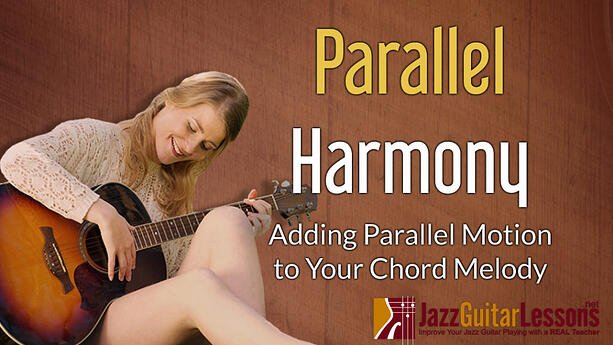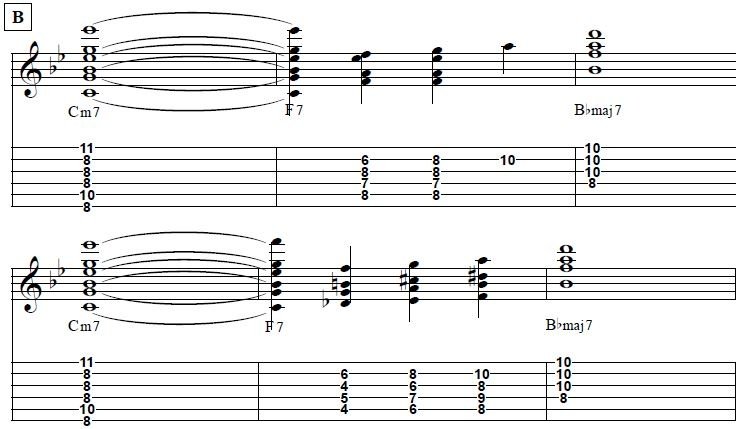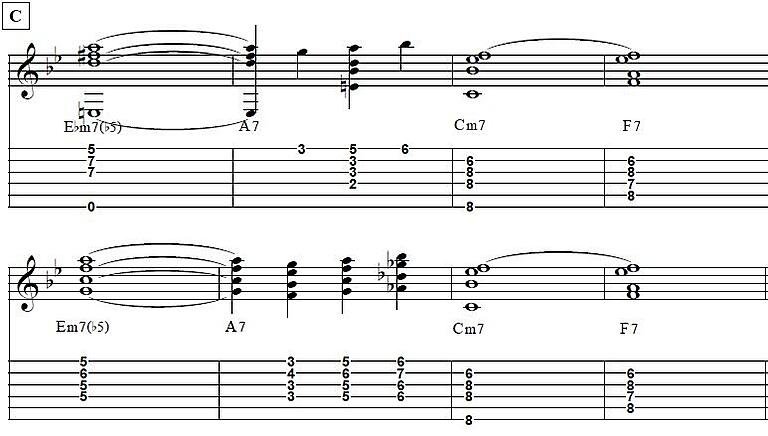Parallel Harmony
Aug 30, 2018Adding Parallel Motion to Your Chord Melody
The goal of this series is to actually put a lick under your fingers. Here, there’s no more searching for ideas in the sea of jazz theory information. We’ll give stuff you need to play and be creative. In this lesson, we will be discussing adding parallel motion to your chord melody.

Lick Example
Today’s idea is taken from the August 2016 Tune of the Month Club for the tune, “Blue Bossa”. Here, we are going to use parallel harmony to add some spice to your chord melodies.
We will take a shape and move it around through the melody, which will give you some outside notes and chords. This is a great and easy way to add some spice to your chords!

This idea almost seems like it’s ridiculously easy, and it is (LOL), but the trick is to know where to place it. You should be looking for points of lots of tension or, perhaps, areas where the harmony is starting to bore your ear.
Think of it like preparing food. Mayonnaise on a sandwich is nice, right? Too much is gross!
How It Works
What we are doing here is simply making use of what is often referred to as “parallel harmony”. Basically, all this means is that the same chord is moved around.
We are taking the melody notes and harmonizing each of them with the same shape by putting them at the top of the same chord voicing. The result is pretty “out” sounding, but our ears make sense of it because of the symmetrical nature of the idea.
More Examples
Now that that's out of the way, let's go over some more examples of applications over different tunes. We will first show you an example of how the chord melody might normally be approached, then we'll add a fun twist using this technique.
Example A
Here is example A. We’re taking the first few bars from the tune, “Days of Wine and Roses”, and harmonizing part of the melody using the popular “Miles Davis voicing”. We’ll show you something one might normally play, then give you a “spiced up” version.

Neat, right? And it didn't take much tweaking at all! Lord knows we have plenty of things to juggle in this music as it is!
Example B
Here is Example B. Now we’re working with the first few measures of “Autumn Leaves”. Here, we are taking this 7#11 voicing and applying the same principle. We are playing part of the melody using these parallel voicings, then returning to a “normal” approach.

Same deal here! Nothing too crazy but the result is some really hip sounds. :-)
Example C
Here is Example C. Now let’s try this concept over a few bars of “Stella by Starlight”. Once again, we’ll show you what one might normally play, then try it with a twist.

It's really neat how such an obvious concept can yield such cool sounds!
Now You Try!
Now it’s your turn. Try using this concept in some of your chord melodies! Remember, discretion is the most important thing here. Knowing when to place it is the hardest part about this.









